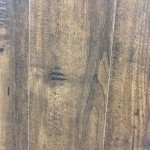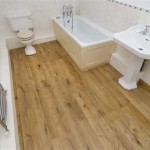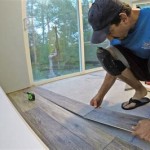Installing Bamboo Flooring Over Concrete Slab: A Comprehensive Guide
Installing bamboo flooring over a concrete slab requires careful preparation and adherence to specific guidelines. This article delves into the essential aspects of this process, guiding you through the steps necessary to achieve a durable and aesthetically pleasing floor.
1. Acclimation
Before installation, allow the bamboo flooring to acclimate to the environment for at least 48 hours. Place the unopened boxes flat in the room where the flooring will be installed. This allows the planks to adjust to the temperature and humidity levels, reducing the risk of buckling and expansion later on.
2. Moisture Barrier
To prevent moisture from seeping into the floor from the concrete slab, install a moisture barrier. A 6-mil polyethylene film is commonly used for this purpose. Overlap the film by 6-8 inches and secure it to the slab with duct tape.
3. Underlayment
An underlayment provides cushioning and moisture protection for the bamboo flooring. Choose an underlayment specific for concrete subfloors and install it according to the manufacturer's instructions. Use a trowel or roller to smooth out any unevenness in the underlayment.
4. Starting Row
Determine the starting point for the flooring. Typically, installation begins in the center of the room and works its way out to the walls. Snap the first plank into place along the starting line, ensuring that the groove side faces the wall.
5. Continuation
Continue snapping the bamboo planks into place, alternating the end joints to create a staggered pattern. Use a tapping block and a hammer to gently tap the planks together until they are flush. Periodically check for levelness using a spirit level.
6. Edge Rows
For the edge rows, measure and cut the planks to fit the remaining space. Use a miter saw or a jigsaw to cut the planks precisely. When installing the edge rows, glue them down to the concrete slab using an approved adhesive.
7. Transitions
If the bamboo flooring transitions into other flooring types, such as carpet or tile, install appropriate transition pieces to create a smooth and seamless connection. Follow the manufacturer's instructions for installing the transitions.
8. Wall Base
After the flooring is installed, install wall base to conceal the expansion gap between the floor and the wall. Use a brad nailer or a construction adhesive to secure the wall base to the floor and wall.
9. Finishing Touches
Once the wall base is installed, you can add finishing touches such as quarter round molding or shoe molding. These moldings enhance the aesthetics of the floor and cover any gaps.
10. Cleaning and Maintenance
After installation, clean the bamboo floor with a soft mop and a pH-balanced cleaner. Regularly sweep or vacuum the floor to prevent dirt and debris from accumulating. Avoid using harsh chemicals or abrasive cleaners on the floor to preserve its finish.

Glue Down Installation Bamboo Hardwood Floor Over Concrete Slab Wood Sub

Beginners Guide To Installing Bamboo Flooring The Company

Beginners Guide To Installing Bamboo Flooring The Company

How To Install Bamboo Flooring Tongue Groove Over Underlay

New Hardwood Flooring Install Conquer Concrete Subfloor Moisture Cali

How To Install Bamboo Flooring Part 1

Can I Install Bamboo Flooring Over Concrete The Company

Beginners Guide To Installing Bamboo Flooring The Company

Installation Of Gluedown Bamboo Flooring And Favorite Tips For A Better Install

Installation Of Gluedown Bamboo Flooring And Favorite Tips For A Better Install








